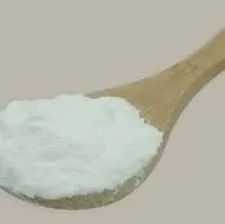Understanding Plastic Additives Enhancing Performance and Versatility
Plastics have become an integral part of our daily lives, found in products ranging from packaging materials to automotive components. However, the performance and functionality of these plastics often require enhancements that are made possible through the use of plastic additives. In this article, we will explore what plastic additives are, their types, and their significance in improving the properties of plastic materials.
What Are Plastic Additives?
Plastic additives are substances added to plastics during the manufacturing process to improve their functionality and performance. They can modify various properties of the base polymer, such as durability, flexibility, color, and resistance to environmental factors. These additives are crucial for tailoring plastics to meet specific needs in diverse applications, ensuring that the end product is not only functional but also cost-effective.
Types of Plastic Additives
1. Stabilizers These additives enhance the longevity and durability of plastic products. For example, UV stabilizers protect plastics from degradation due to ultraviolet light, while heat stabilizers prevent thermal degradation during processing.
2. Plasticizers These substances are added to increase the flexibility and workability of plastic materials. Commonly used in polyvinyl chloride (PVC), plasticizers help lower the brittleness of the polymer, making it suitable for applications such as cables, flooring, and synthetic leather.
3. Fillers Fillers are used to improve the strength and bulk of plastic products while reducing costs. Materials like calcium carbonate and talc not only enhance mechanical properties but also can improve processing characteristics.
4. Colorants Dyes and pigments are added to plastics to achieve desired colors and aesthetics. Colorants can also provide other benefits, such as UV protection, which can extend the lifespan of the product.
5. Flame Retardants As safety becomes increasingly important, flame retardants are added to plastics to reduce flammability and meet rigorous safety standards, particularly in electrical and electronic applications.
what is plastic additives

6. Antioxidants These prevent oxidative degradation of plastics during processing and throughout the product's life cycle. They help maintain the integrity and appearance of the plastic.
7. Surfactants and Processing Aids These additives improve the processing characteristics of plastics, enhancing flow and reducing viscosity, making it easier to mold and extrude materials.
The Importance of Plastic Additives
The significance of plastic additives cannot be overstated. They play a pivotal role in determining the end-use performance and durability of plastic materials. Without these additives, many plastics would be too rigid, brittle, and prone to degradation under environmental stressors. By modifying the physical and chemical properties of the base polymers, additives enable the creation of specialized products tailored to specific applications.
For instance, in the automotive industry, additives are essential for producing lightweight, sturdy materials that can withstand extreme conditions while ensuring safety and performance. In the packaging sector, additives enhance the barrier properties of plastics, extending the shelf life of food products.
Environmental Considerations
As the plastic industry faces increasing scrutiny over environmental impacts, the role of additives is evolving. Biodegradable and eco-friendly additives are being developed to minimize the environmental footprint of plastic products. Furthermore, innovations such as recycled additives are gaining traction, pushing the industry toward sustainable practices.
Conclusion
In conclusion, plastic additives are vital components in the plastics industry, enhancing the performance, durability, and aesthetic appeal of plastic products. With various types of additives available, manufacturers can tailor plastics to meet the demands of different applications, ranging from consumer goods to industrial uses. As the focus on sustainability and environmental impact continues to grow, the development of eco-friendly additives will likely shape the future of plastic manufacturing, ensuring that these versatile materials can be used responsibly. The continued innovation in this field promises a more sustainable and efficient approach to plastic utilization in our modern world.

